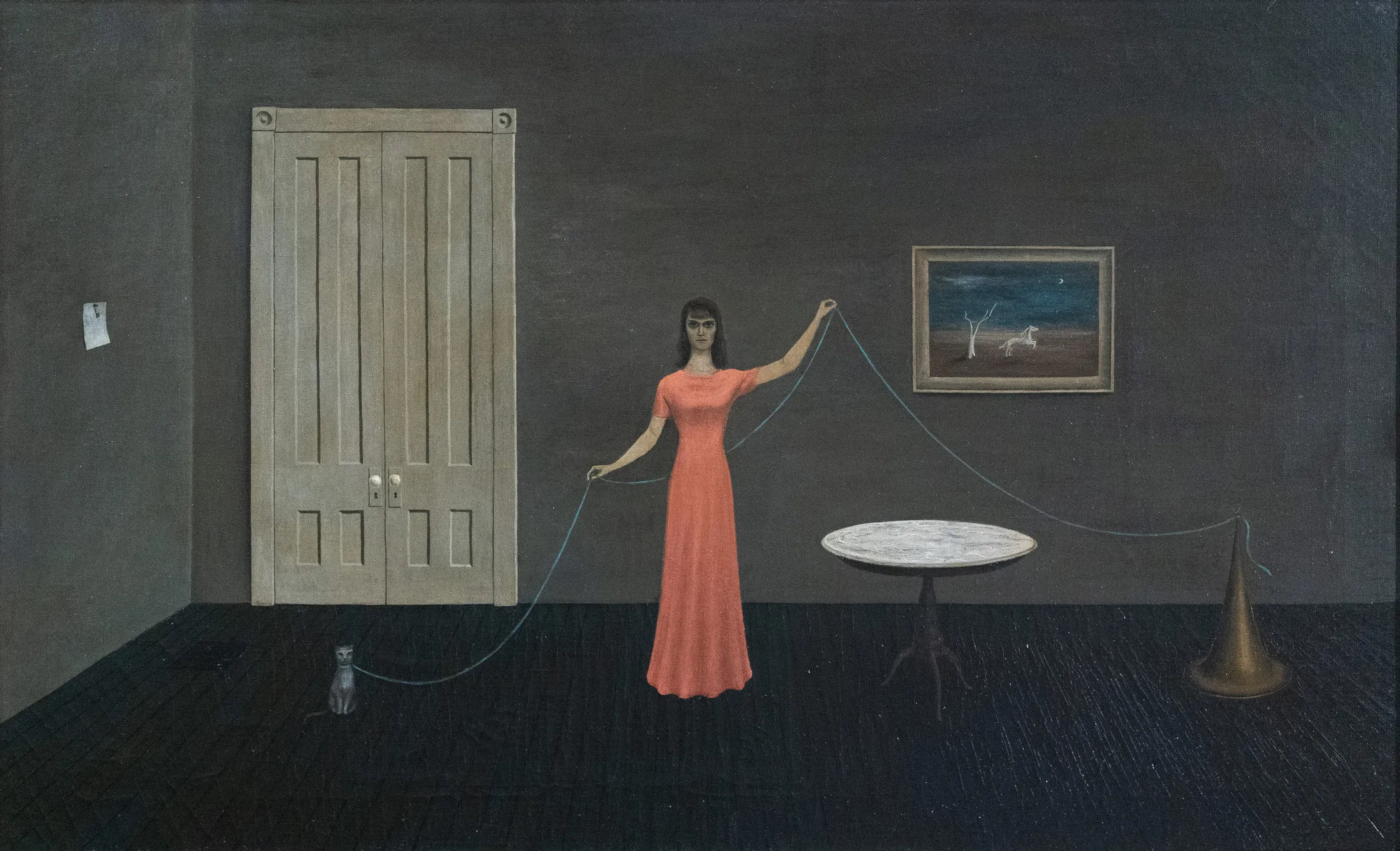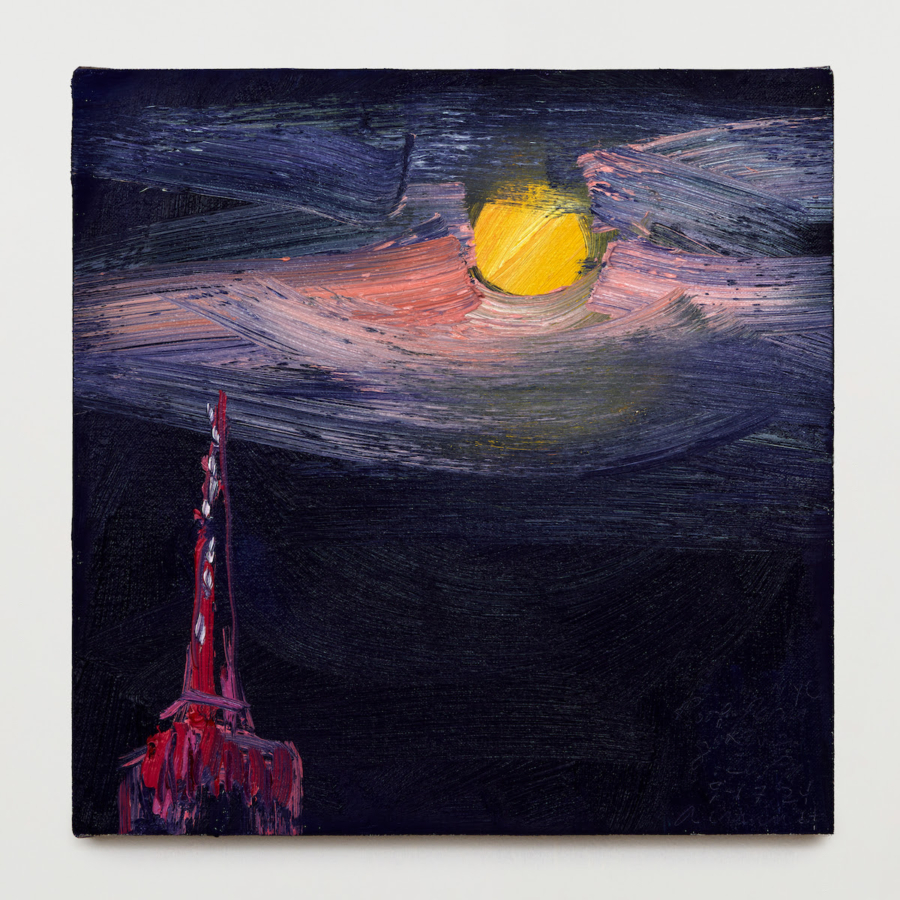
March 4, 2025
A retrospective at Carnegie Museum of Art, Pittsburgh, traces the artist’s insistent, strange and utterly distinct iconography across three decades
Gertrude Abercrombie gave things the impression of being marmoreal and cold. Her still lifes, stark as her interiors, feature simple configurations of subjects on smooth, sterile grounds. Her landscapes are desolate and severe, haunted like an Edgar Allan Poe story. Her palette revolves around steely greys, cold whites and serious blacks in combination with occasional rich tones: azure, forest green, shell pink, oxblood. Skies that are grey and overcast from afar often turn out to be infused with lush purples and blues up close; through her handling of paint, austerity acquires a sumptuous aspect.
Across the seven, mostly chronological galleries that comprise ‘The Whole World Is a Mystery’ – a retrospective of 85 works from 1937 to 1971, originating at the Carnegie Museum of Art, Pittsburgh and travelling to Colby College Museum of Art, Waterville and Milwaukee Art Museum – Abercrombie repeats a repertoire of figures that constitute her personal iconography: cats, owls, ailing trees, clouds, the moon, hingeless doors, ladders, gloves, shadows, shells, eggs, dominoes, carnations, castle towers. Together, these carefully chosen symbols conjure a distinctly witchy, mysterious and unsettling mood. The instructive model of Gertrude Stein, whom the artist met briefly in 1935 and declared a major influence on her painting, adds a particular charge to Abercrombie’s strategic use of repetition to realize her insistent and strange vision.
The artist’s nocturnal landscapes, in particular, invite allegorical readings with their bleak romanticism; Figure Facing East (1947), in which a lone woman wanders a largely barren expanse by moonlight, could easily pass as a set design for Samuel Beckett’s Waiting for Godot (1953). Of the recurring subjects Abercrombie favoured, the solitary figure of a tall, thin woman – often characterized by a ghostly pallor, sunken eyes and a dress so long she appears to hover – is the most persistent. This character serves as the artist’s proxy, her presence making scenes even more dreamlike. Abercrombie’s other idée fixe was putting pictures within pictures: positioned on the wall of an interior, tiny paintings or window views open up a telescoping chain of receding space like a wormhole punching through the fourth wall. The nesting device in A Picture in a Picture in a Picture (1955) – in which a grey room with a closed white door and emerald-green fainting couch contains a painting that depicts a similar scene – not only performs a surrealist sleight of hand that destabilizes perception and draws us in, but also plays to Abercrombie’s affinity for the miniature in general and her love of small-scale imagery with microscopic detailing.
Abercrombie, who died in 1977 aged 68, spent most of her life in Chicago, where her apartment in the city’s Hyde Park neighbourhood was a salon of avant-garde cross-pollination frequented by jazz icons such as Dizzy Gillespie, Billie Holiday and Charlie Parker, as well as a community of queer and progressive artists. The life and the work can seem incongruous; the often-nightmarish tenor of her art appears at odds with the magnetic personality and sense of humour for which she was known. But the disjunct dissolves when viewed from another angle. Abercrombie’s art insists on an inviolable space around each painted figure – a separateness that feels elemental and resolute. Together with the alienated nature of her scenes, the sense of space on which her compositions are built expresses a commitment to difference and personal freedom. She cultivated strangeness and centred depictions of private psychic space, sometimes blurring distinctions between inside and outside to summon a liminal state. What exudes desolation and loneliness also embodies a radical idiosyncrasy and intentionality, a belief in the artist as always being apart. ‘Incongruity’, Abercrombie is quoted as saying in co-curator Sarah Humphreville’s catalogue essay, ‘is the secret of art’.


